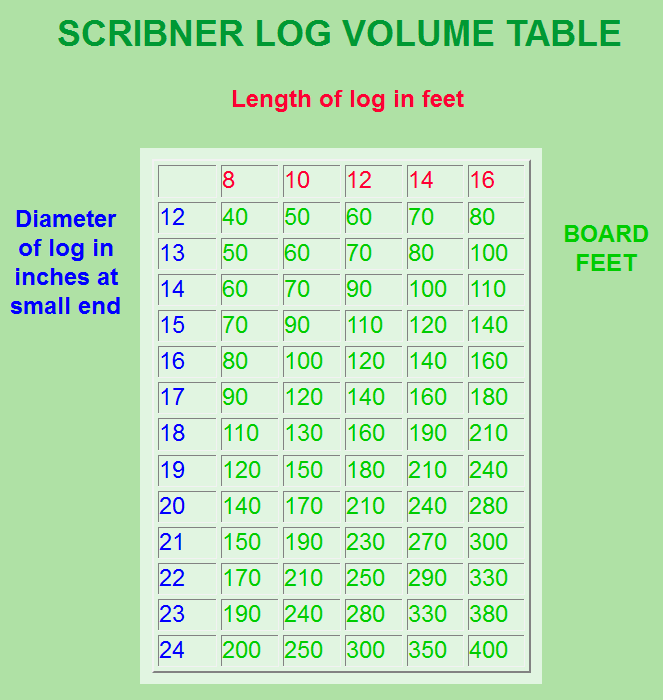Portable Sawmill Finder
How do I measure board feet in my logs?
Home Members About Contact Sawyers Store Sawmilling FAQ's
What is a Log Scale?
Buy a complete log scale book $14.99 Download and print a free scale here
A method for calculating wood volume in a tree or log by using its diameter and length.Since the beginning of mechanical sawmill constructionhundreds of log rules have been developed, using a variety of methods. Some were based upon the lumber tallies of individual mills, others were developed by diagramming the cross-section of boards in the ends of logs, while still others were developed using mathematical formulas. In general, log scales must account for the taper that exists in all logs, saw kerf (or the loss of wood as sawdust), and a fixed procedure for removing wood on the outside of the logs (waste). The Doyle, Scribner, and International log scales are probably the most widely used scales in the United States.
Scribner Log Scale See a Scribner scale at the bottom of this page.
The Scribner Log Rule, developed around 1846, is a good example of a diagram rule. It was created by drawing the cross-sections of 1-inch boards within circles representing the end view of logs. A space of 1/4 inch (circular mills) was left between the boards to account for saw kerf. The Scribner Scale does not have an allowance for log taper and typically underestimates logs, particularly if the log length is long. The Scribner Decimal C is a different form of the Scribner Scale; it rounds the volumes to the nearest 10 board feet. For example, 392 board feet on the Scribner is equivalent to 390 board feet on the Scribner Decimal C scale.
Doyle Log Scale
The Doyle Log Scale, developed around 1825, is based on a mathematical formula and is widely used throughout the southern United States. This rule allows for a saw kerf of 5/16 inch (most circular mills). Because of this, the Doyle Rule is somewhat inconsistent; it underestimates small logs and overestimates large logs. See a Doyle log scale.
International 1/4-Inch Log Scale
This Scale was developed in 1906 and is based on a reasonably accurate mathematical formula. The rule allows for a 1/4-inch saw kerf (circular mills) and a fixed taper allowance of 1/2 inch per 4 feet of log length. Deductions are also allowed for shrinkage of boards and a waste thickness that varies with the log diameter. Overall, the International 1/4-Inch Log Scale is the most consistent and is often used as a basis of comparison for log rules. See an International Log Scale here.
The most common method used is the Scribner Log Volume Table (below).
Other methods include the Doyl and International scale or tables.
Get a Free Log Scale here.

Hosting by Galaxy Host | Privacy Policy | Terms and Conditions
